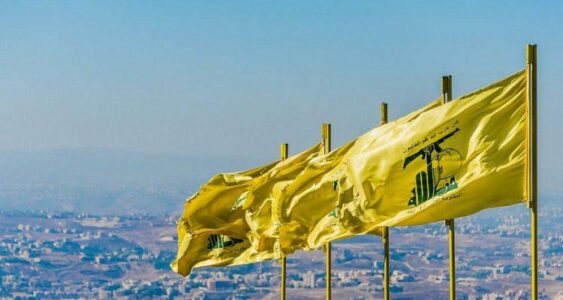
Hezbollah drug trade – The dark web of drugs risks undoing economic, social progress amidst COVID
Even as the world struggles to come to terms with the COVID-19 pandemic, terrorist groups such as Hezbollah continue to target the security and stability of the entire Middle East region as well as the world at large. The dimension of the threat has been steadily assuming international gravitas. US, Israel, Canada, the Gulf Cooperation Council, the Arab League and, most recently, Australia – have declared it a terrorist organization. The international community needs to tackle the menace with an urgency that matches the grim threat.
Estimates indicate that there have been attempts to smuggle more than 600 million pills from Lebanon in the past six years – hidden in the shipments of pomegranates, pastas, cocoa, and mechanical equipment. Over $3 billion worth of Captagon has been seized since February last year. The Hezbollah-led drug menace is increasingly becoming difficult to tame. With the GCC shipping ban in place, the Hezbollah is now trying to smuggle drugs through new transit routes.
Lebanon has badly failed to stop the export of the scourge of drugs from its land. It has not taken any action against Hezbollah that is behind the brazen drug trafficking in the Middle East. Lebanon has also clearly ignored UN Security Council’s repeated appeals to commit to a policy of disassociation from any external conflicts in the region. Hezbollah, too, systematically violated UNSC resolutions time and again.
What needs to be understood is how the illicit drug trafficking is negatively impacting the security and stability of the entire region. Drug trafficking is a part of Hezbollah’s myriad criminal, terrorist and militant activities. It has been supporting other terror groups in the region – causing unrest in Israel, Iraq, Syria, Yemen, Egypt, Bahrain, and Jordan. Hezbollah has been ideologically aligned to Iran right from the time it took roots in the early 1980s during the long-drawn Lebanese Civil War. Declassified documents by CIA have revealed how Iran’s Ministry of Intelligence, in the 1980s, instructed Hezbollah to conduct propaganda campaigns under the alias of Islamic Jihad.
Hezbollah has since grown in power under the patronage of Iran. Its arsenal of global terror network now includes narcotics trade, cyber espionage, waging wars with Islamist terror groups, training Iranian proxies, illicit financing, money laundering, etal. The syndicate is known to generate more than a billion dollars each year through these means! The United States Drug Enforcement Agency has also amassed substantial evidence about Hezbollah’s narcoterrorism network under ‘Project Cassandra.’
Cornered by the US-imposed sanctions, economic meltdown in Lebanon, and the pandemic-induced crisis, the Hezbollah has strongly activated its drug cartel to generate funds for its stealthy militant ambitions. Intelligence analysts have established links between Hezbollah and drug seizures in locations in central and southern Europe as well. It is also known to have a nexus with Latin American drug cartels.
Iran has been calling the shots right from the beginning. It is the face behind the façade called Hezbollah – using it to advance its own terrorist agenda. In 2006, when the war with Israel drained Hezbollah financially, Iran equipped the militant organization with labs for drug manufacturing. The operations soon found way to Syria when the civil war ravaged the country. Hezbollah’s blatant denial is plain hogwash. Captagon is just the tip of the iceberg. Narcotics such as heroin, crystal meth, and hashish are also finding their way into the world from the Hezbollah strongholds in Lebanon and Syria. The Hezbollah leadership has even publicly agreed to have been receiving funds from Iran. The US State Department has named Hezbollah among the top five global criminal organizations.
Recently, the Indian Coast Guard and Anti-Terrorism Squad captured an Iranian boat with all-Iranian crew off the Gujarat coast. The drug menace has spread globally like an epidemic. Between 2010 and 2019, the estimated number of drug users globally increased by 22%. If projections hold true, by 2030, the number of people using drugs will rise by 11% around the world, and almost 40% in Africa alone. The figures spin a bleak tale: Drug use and its associated disorders claimed almost half a million lives and 18 million years of healthy life in 2019. Major drug markets on the dark web are now worth over $315 million annually.
Data also suggests that the shipments of trafficked drugs have become larger since last year. So have the seizures. Between 2015 and 2019, South and Central America recorded a five-fold increase in the amount of new synthetic psychoactive substances seized. The seizures in Middle East, Africa, South and Southwest Asia have also increased substantially.
It is a menace that can be and should be tackled urgently. It has an economic and social cost that the world, already struggling with the Covid pandemic, cannot afford.
Source: First Post





